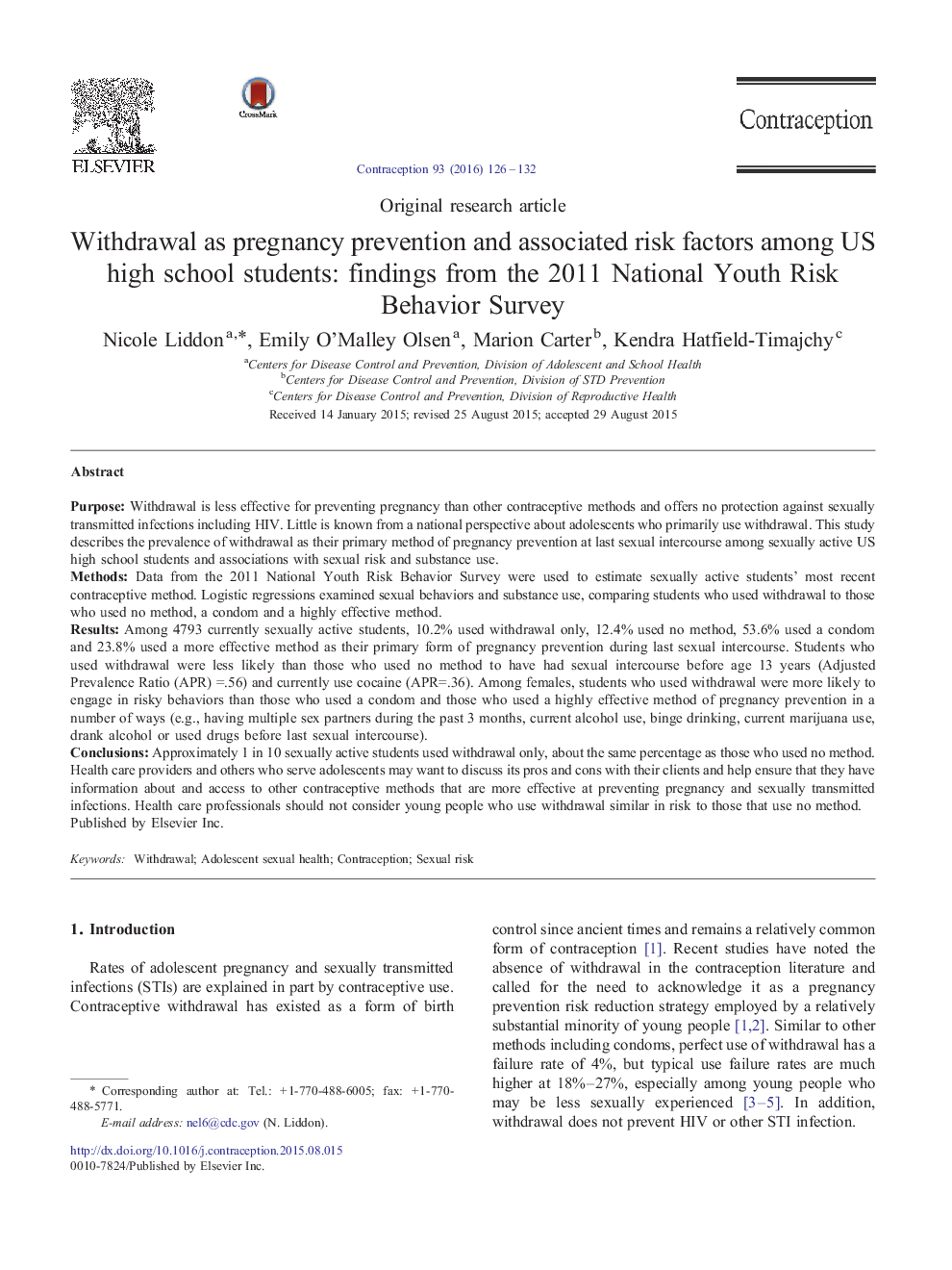| Article ID | Journal | Published Year | Pages | File Type |
|---|---|---|---|---|
| 6170581 | Contraception | 2016 | 7 Pages |
PurposeWithdrawal is less effective for preventing pregnancy than other contraceptive methods and offers no protection against sexually transmitted infections including HIV. Little is known from a national perspective about adolescents who primarily use withdrawal. This study describes the prevalence of withdrawal as their primary method of pregnancy prevention at last sexual intercourse among sexually active US high school students and associations with sexual risk and substance use.MethodsData from the 2011 National Youth Risk Behavior Survey were used to estimate sexually active students' most recent contraceptive method. Logistic regressions examined sexual behaviors and substance use, comparing students who used withdrawal to those who used no method, a condom and a highly effective method.ResultsAmong 4793 currently sexually active students, 10.2% used withdrawal only, 12.4% used no method, 53.6% used a condom and 23.8% used a more effective method as their primary form of pregnancy prevention during last sexual intercourse. Students who used withdrawal were less likely than those who used no method to have had sexual intercourse before age 13 years (Adjusted Prevalence Ratio (APR) =.56) and currently use cocaine (APR=.36). Among females, students who used withdrawal were more likely to engage in risky behaviors than those who used a condom and those who used a highly effective method of pregnancy prevention in a number of ways (e.g., having multiple sex partners during the past 3 months, current alcohol use, binge drinking, current marijuana use, drank alcohol or used drugs before last sexual intercourse).ConclusionsApproximately 1 in 10 sexually active students used withdrawal only, about the same percentage as those who used no method. Health care providers and others who serve adolescents may want to discuss its pros and cons with their clients and help ensure that they have information about and access to other contraceptive methods that are more effective at preventing pregnancy and sexually transmitted infections. Health care professionals should not consider young people who use withdrawal similar in risk to those that use no method.
